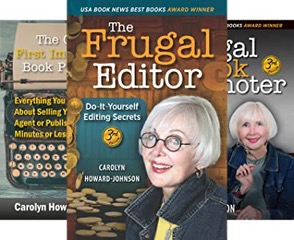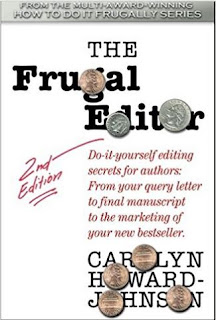Preplanning for Jump Starting Your Book with Reviews
Dear Subscribers and Visitors:
I still working madly on the second edition of my How to Get Great Book Reviews Frugally and Ethically with Modern History Press. It was time for a new one because getting reviews is so important and because there is so much new in the Wonderful World Wide Web surrounding the publishing industry (yep, four w’s!) to deal with these days. I hoped to have better news for the introduction of its release with this more important aspect of releasing a book that most authors miss out on. Thus, think of it as a sneak preview with more on this topic to come!
That book is still needed because using query letters and ARCs before a book’s release is still a mystery to so many. And, of course, reviews are still one of our very most useful (and successful) marketing devices. So please keep it mind!
So this will be short. It’s something for you to copy-and-paste or bookmark somewhere it won’t get lost. You might also install a likely date on your calendar—at least four months before the expected release date or the book you are working on right now. I know. Appalling. But that’s a conservative estimate of the time your pre-release review campaign needs to be ready to go before you type in those last three oglethorpes. No, I am not kidding. Here is a little excerpt from that new edition to get you fired up:
My clients and readers hear me talk about preplanning often because human beings so often play the waiting game. It’s no different in the world of getting reviews. Preplanning for your first review-getting campaign is no small thing. It is essential to getting reviews into what I call the supermedia—that’s the media that other media and publishing industry gatekeepers rely on to give them the publishing world’s current news. That’s where you book needs to have a klieg light shining on it get the kind of exposure when and where it is most needed to assure your dream of selling lots of copies, of becoming a bestseller. That early review-getting campaign should include the news of your book’s release along with beautifully written and ethical reviews of your book.
If there was ever harmful information being bandied about in the publishing world, this is it: “To promote your book, especially to get reviews, you should have a book available online or in print for reviewers to actually read,. You needn’t wait to have proof copies or ARCs (advance reader—or reviewer—copies) before you can ask for reviews. Authors who believe these rumors spread by web grapevines will miss their only opportunity to pitch a review to big review journals and to get the most exciting blurbs possible for the backs of their books.
The kind of query and ARC you are expected to provide to a reviewer depends on the kind of reviews you are trying to get, of course, but even the most sought-after review journals may accept manuscripts, galleys, or other means as review copies—all covered in detail in my How to Get Great Book Reviews book. It isn’t easy but the exposure you’ll get just as your book is released is well worth pursuing, When I was working as an assistant editor at Hearst’s famous Good Housekeeping Magazine, we started our decision-making for our holiday issue six months in advance and our stories weren’t always current news. That was necessary production time. Our stories that involved authors often had nothing to do with the release of their most current book. We authors need to know this kind of thing to work on our patience-and preplanning quotient!
Caution: In this world of ever-growing AI (artificial intelligence), I frequently mention the important decision authors and publishers must make according to their tolerance for risk in any given situation. A real paper copy is considered more plagiarism- and AI-resistant than e-books and that is true for ARCs, too.
I hope we’ll talk more about increasing your chances of getting expert reviews and some others (I call them “forever reviews. This is just your heads up that it is almost never too early, but it can be too late —to start working on the review process for your book. The publishing industry isn’t trying to keep it a secret from authors and publishers. It’s just that the system has been around a long time, there is so much new to know, there is so much misinformation out there, and, frankly, (Breathe!) there are so many newbies just waiting to be taken advantage of.
So, next when you get that alert message from your calendar, let’s talk. If the starving authors among you can’t afford to buy my book, let me know by sending an e-mail to me at HoJoNews @. AOL dot. com with “Carolyn’s #AuthorsHelpingAuthors Project.”
Disclaimer: This isn’t an exact excerpt from the How to Get Great Book Reviews Frugally and Ethically. It has been liberally tweaked so authors and publishers can get information they need to save good books from never getting the great start needed to propel their success and to help build long writing careers.
MORE ABOUT CAROLYN
The Image Amazon Makes for Authors with Series--Free!
Once a month Carolyn Howard-Johnson shares something writer-related she hopes might save some author from embarrassment (or make the task of writing more fun or creative) here on Karen Cioffi’s #WritersontheMove blog. This is an extra promotion that Karen graciously offered me after the release of the second edition of my How to Get Great Book Reviews Frugally and Ethically.It is part of her multi award-winning #HowToDoItFrugally Series of books for writers from Modern History Press including the third edition of The Frugal Editor . Find them all on Amazon’s new buy-page for series where the e-book versions are all offered with a single click. (The availability—free—of that new page for book series is another of her #FrugalBookPromoterTips she shares regularly on the social network X at www.twitter.com/frugalbookpromo.)
Carolyn finds time to blog all things publishing at her SharingwithWriters blog between serving her clients and writing new books.






















